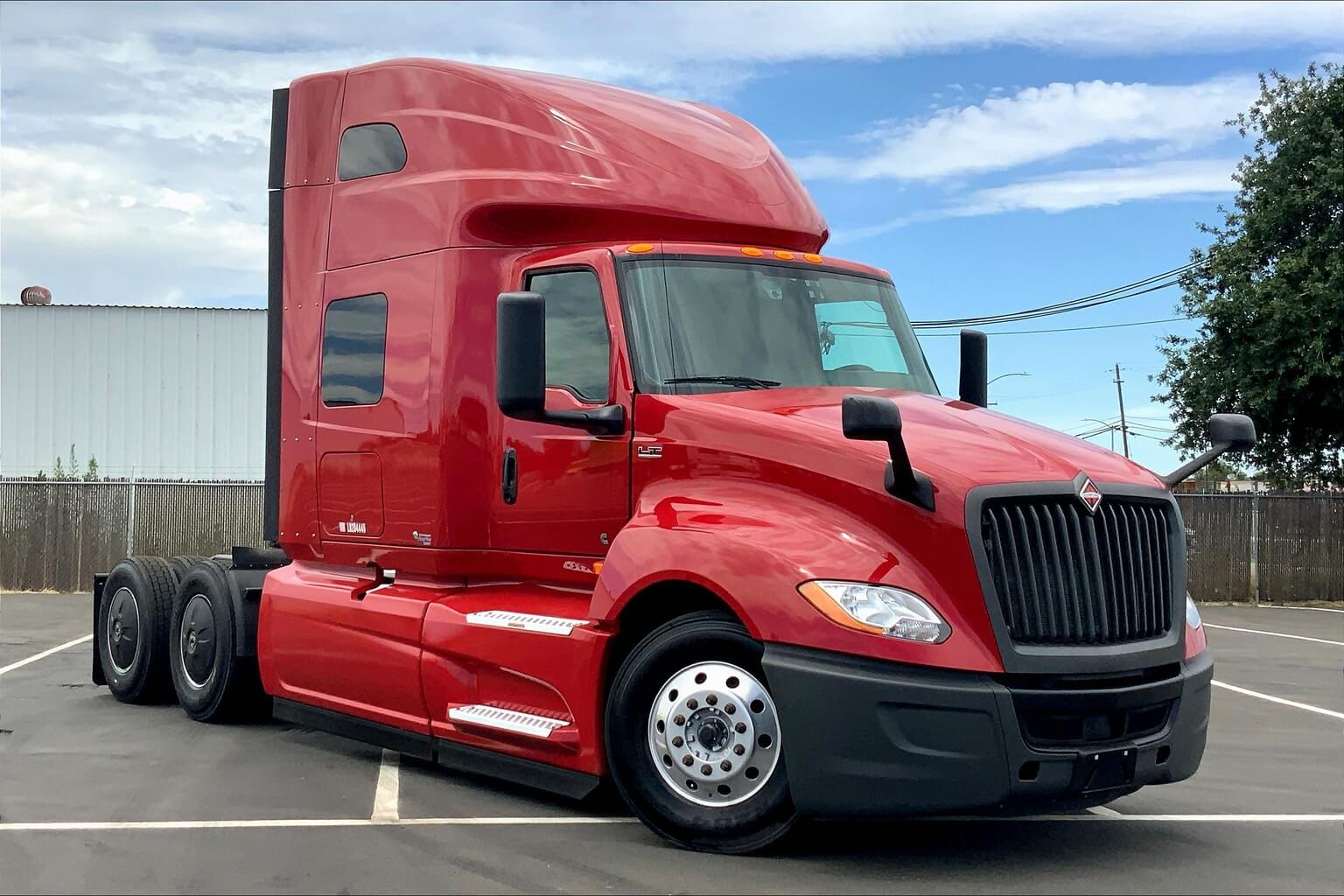Semi Truck Blue Book Value: Your Comprehensive Guide to Valuation typestruckssale.com
In the vast and vital world of commercial trucking, understanding the true worth of an asset is paramount. Whether you’re a seasoned owner-operator looking to upgrade, a new entrant planning your first purchase, a fleet manager optimizing your inventory, or a lender assessing collateral, the concept of Semi Truck Blue Book Value is your indispensable guide. Unlike passenger vehicles, which often have universally recognized valuation guides, the "Blue Book" for semi-trucks is a more nuanced and complex landscape. This comprehensive guide will demystify Semi Truck Blue Book Value, exploring its definition, importance, the myriad factors that influence it, and practical strategies for accurate valuation.
What is Semi Truck Blue Book Value?
Semi Truck Blue Book Value: Your Comprehensive Guide to Valuation
At its core, Semi Truck Blue Book Value refers to an estimated market value of a used semi-truck. However, it’s crucial to understand that there isn’t a single, universally accepted "Blue Book" for commercial trucks akin to the Kelley Blue Book for cars. Instead, the valuation of semi-trucks draws from a variety of specialized industry sources, databases, and market analyses that provide data-driven insights into a truck’s worth. These sources, such as TruckPaper.com, EquipmentWatch, Ritchie Bros. Auctioneers, and various dealer networks, compile extensive data on past sales, current listings, and market trends to help approximate a fair market value.
The importance of understanding Semi Truck Blue Book Value cannot be overstated. For buyers, it ensures you’re paying a fair price and not overspending. For sellers, it helps set a competitive price that attracts serious buyers while maximizing return on investment. Lenders rely on these valuations to determine loan amounts and assess risk, while insurance companies use them to calculate premiums and determine payouts in case of damage or loss. In essence, knowing the Semi Truck Blue Book Value empowers all parties involved in a transaction with vital information, fostering transparency and informed decision-making.
Why is Blue Book Value Crucial for Semi Trucks?
The commercial trucking industry operates on significant capital investments, and a small difference in valuation can translate into thousands of dollars. Understanding Semi Truck Blue Book Value offers several critical advantages:
- Informed Purchasing Decisions: Buyers can avoid overpaying by cross-referencing asking prices with estimated market values. This knowledge provides leverage in negotiations.
- Optimized Selling Strategies: Sellers can price their trucks competitively, attracting serious buyers and ensuring a quick, profitable sale. An accurate valuation prevents underpricing or overpricing, both of which can hinder a sale.
- Accurate Financing and Loan Applications: Lenders rely heavily on Semi Truck Blue Book Value to determine loan-to-value ratios, interest rates, and overall loan approval. A well-documented valuation can secure better financing terms.
- Fair Insurance Coverage and Claims: Insurance premiums are often based on the truck’s estimated value. In the event of a total loss, the Semi Truck Blue Book Value guides the payout, ensuring fair compensation.
- Depreciation Tracking and Asset Management: For fleets and owner-operators, regularly assessing Semi Truck Blue Book Value helps in tracking depreciation, planning for future replacements, and making strategic asset management decisions.
- Business Planning and Forecasting: Understanding the market value of your assets contributes to more accurate financial planning, budgeting, and long-term business projections.
Factors Influencing Semi Truck Blue Book Value
Unlike passenger cars, semi-trucks are complex machines with diverse configurations and usage patterns, meaning their value is influenced by a much wider array of factors. A thorough understanding of these elements is key to accurately assessing Semi Truck Blue Book Value.
- Make and Model: Certain manufacturers (e.g., Peterbilt, Kenworth, Freightliner, Volvo, International, Mack) hold different reputations for reliability, durability, and resale value. Specific models within these brands also command varying prices based on their market popularity and perceived quality.
- Year of Manufacture (Age): Newer trucks generally command higher prices due to less wear and tear, updated technology, and longer expected lifespans. However, the depreciation curve for semi-trucks is steep in the initial years.
- Engine Type and Horsepower: The engine is the heart of a semi-truck. Its make (e.g., Cummins, Detroit Diesel, PACCAR, Volvo), horsepower rating, and torque output significantly impact its value. Powerful and fuel-efficient engines are highly sought after.
- Mileage: High mileage indicates extensive use and potential wear on components. While semi-trucks are built to last hundreds of thousands of miles, lower mileage typically translates to a higher Semi Truck Blue Book Value.
- Condition (Cosmetic & Mechanical): This is perhaps the most subjective yet critical factor.
- Mechanical Condition: Functionality of the engine, transmission, axles, brakes, suspension, and other vital systems. Any major repairs needed will significantly reduce value.
- Cosmetic Condition: The appearance of the exterior (paint, chrome, body panels, tires) and interior (seats, dashboard, sleeper area). A well-maintained appearance suggests overall care.
- Maintenance Records: A complete and verifiable service history indicating regular maintenance and professional repairs adds immense value. It demonstrates responsible ownership and provides peace of mind to buyers.
- Transmission Type: While manual transmissions were once standard, automatic and automated manual transmissions (AMTs) are becoming increasingly popular for their ease of use, fuel efficiency, and reduced driver fatigue, often boosting value.
- Axle Configuration: Common configurations like 6×4 (tandem axle drive) are standard for heavy hauling, while 4×2 (single axle drive) might be for lighter duty or specific applications. The configuration must match market demand.
- Sleeper Size/Configuration: Day cabs (no sleeper) are cheaper but limit hauling range. Sleeper cabs vary in size (e.g., 48-inch, 72-inch, 80-inch) and amenities, directly impacting value based on their utility for long-haul operations.
- Special Features and Upgrades: Auxiliary Power Units (APUs), wet kits for hydraulic trailers, custom interiors, upgraded navigation systems, premium sound systems, chrome packages, and other aftermarket additions can enhance value if they appeal to a wide range of buyers.
- Region and Market Demand: Values can vary geographically due to regional economic conditions, industry-specific demand (e.g., oil & gas, agriculture), and local supply of used trucks.
- Economic Conditions: Broader economic factors like fuel prices, interest rates, freight rates, and the overall health of the transportation industry can significantly impact Semi Truck Blue Book Value. A booming freight market often drives up truck values.
- Accident History/Title Status: A clean title free of salvage, rebuilt, or flood designations is crucial. Any accident history, even minor, can reduce value, especially if not professionally repaired.
How to Determine Semi Truck Blue Book Value
Given the complexity, a multi-pronged approach is best for accurately determining Semi Truck Blue Book Value.
- Utilize Online Valuation Tools and Marketplaces:
- TruckPaper.com: A leading online marketplace with extensive listings. You can search for comparable trucks and often find historical sales data or valuation tools.
- EquipmentWatch: Offers detailed valuation data and appraisal guides for heavy equipment, including semi-trucks. This is often a subscription-based service but highly valuable for professionals.
- Ritchie Bros. Auctioneers / IronPlanet: These auction sites provide records of past sales, which can be excellent indicators of real-world market prices.
- Commercial Truck Dealership Websites: Many large dealerships have "value your trade" tools or list their inventory, allowing you to compare prices.
- Analyze Comparable Sales (Comps): Search for trucks of the same make, model, year, engine, and similar mileage/condition that have recently sold or are currently listed. Pay close attention to how much trucks actually sold for at auction or through private sales, not just asking prices.
- Consult Industry Experts and Dealers: Reputable semi-truck dealerships and brokers often have a deep understanding of market values and can provide professional insights or appraisals. They deal with these transactions daily.
- Professional Appraisals: For high-value trucks, fleet valuations, or complex situations (e.g., insurance claims, legal disputes), consider hiring a certified independent appraiser specializing in heavy equipment.
- Gather Comprehensive Vehicle Information: Before seeking any valuation, compile all relevant data: VIN, exact make/model/year, engine specs (HP, torque), transmission type, axle configuration, sleeper size, odometer reading, maintenance records, and detailed photos of the interior and exterior. The more information you have, the more accurate the valuation.
Challenges and Considerations in Valuation
Determining Semi Truck Blue Book Value comes with its unique set of challenges:
- Lack of a Single, Universal "Blue Book": As mentioned, the absence of one definitive guide means you must cross-reference multiple sources and apply critical judgment.
- Rapid Depreciation: Semi-trucks, especially in their early years, depreciate quickly. Their value is tied to their ability to generate income, and as they age, their reliability and efficiency may decline, impacting earning potential.
- Market Volatility: The value of semi-trucks is highly sensitive to economic shifts, fuel prices, freight rates, and regulatory changes. What was a fair price yesterday might not be today.
- Subjectivity of "Condition": One person’s "good condition" might be another’s "fair." Honest and objective assessment of wear, tear, and mechanical issues is crucial.
- Niche Market/Specialized Equipment: Trucks with highly specialized configurations (e.g., heavy haul, vocational trucks) may have a smaller buyer pool, making their valuation more challenging and potentially slower to sell.
Tips for Maximizing Your Semi Truck’s Value
If you’re planning to sell your semi-truck, these tips can help you achieve the best possible Semi Truck Blue Book Value:
- Adhere to a Strict Maintenance Schedule: Regular oil changes, filter replacements, tire rotations, and component inspections are paramount. Prevention is cheaper than repair.
- Keep Meticulous Records: Organize all service receipts, repair invoices, and maintenance logs. A comprehensive history demonstrates diligent care and transparency.
- Address Minor Issues Promptly: Small dings, scratches, non-functioning lights, or minor fluid leaks can detract significantly from perceived value. Fix them before showing the truck.
- Invest in Cosmetic Care: A thorough professional detailing, including interior cleaning, exterior wash, polish, and tire shining, can dramatically improve curb appeal and signal a well-cared-for truck.
- Consider Strategic Upgrades: While not all upgrades add value, an APU, quality tires, or a refreshed interior can be attractive to buyers and justify a higher price.
- Be Transparent and Honest: Disclose any known issues or accident history. Honesty builds trust and can prevent problems down the line.
Semi Truck Blue Book Value: Illustrative Price Range Table
As there is no single, definitive "Blue Book" for semi-trucks, the following table provides illustrative price ranges based on general market conditions. Please note that actual values will vary significantly based on the specific make, model, engine, mileage, exact condition, features, regional demand, and current economic factors. This table is intended as a general guide, not a definitive price list.
| Truck Type | Year Range | Condition (Good) | Condition (Fair) | Condition (Poor/Salvage) | Key Differentiating Factors |
|---|---|---|---|---|---|
| Day Cab | 2018-2023 | $55,000 – $120,000+ | $40,000 – $70,000 | $15,000 – $35,000 | Lower mileage, preferred engine/transmission, clean interior/exterior |
| 2013-2017 | $30,000 – $60,000 | $20,000 – $40,000 | $5,000 – $18,000 | Well-maintained, lower end of mileage for age, minor cosmetic wear | |
| 2008-2012 | $15,000 – $35,000 | $8,000 – $20,000 | $2,000 – $10,000 | High mileage, significant wear, potential major repairs needed | |
| Sleeper Cab | 2018-2023 | $75,000 – $180,000+ | $60,000 – $120,000 | $25,000 – $50,000 | Larger sleeper, premium engine, low mileage, excellent service history, high-end features |
| (Long Haul) | 2013-2017 | $45,000 – $90,000 | $30,000 – $65,000 | $10,000 – $25,000 | Good mechanicals, average mileage for age, some cosmetic imperfections |
| 2008-2012 | $20,000 – $50,000 | $10,000 – $30,000 | $3,000 – $15,000 | Extensive mileage, significant mechanical issues, interior/exterior wear | |
| Vocational Trucks | 2018-2023 | $80,000 – $250,000+ | $60,000 – $150,000 | $30,000 – $70,000 | Specific configurations (dump, mixer, garbage), specialized equipment condition |
| (e.g., Dump, Mixer) | 2013-2017 | $40,000 – $100,000 | $25,000 – $60,000 | $10,000 – $30,000 | Hours of operation, wear on specialized components, maintenance records |
| 2008-2012 | $15,000 – $50,000 | $8,000 – $25,000 | $2,000 – $12,000 | Rust, frame integrity, wear on specialized hydraulic systems |
Disclaimer: This table is for illustrative purposes only. The actual Semi Truck Blue Book Value for any specific vehicle depends on a multitude of factors, including precise specifications, geographical location, current market demand, and the vehicle’s unique history and condition. Always seek professional valuation or conduct thorough market research for accurate pricing.
Frequently Asked Questions (FAQ) About Semi Truck Blue Book Value
Q1: Is there one official "Blue Book" for semi-trucks like there is for cars?
A1: No, there isn’t a single, universally recognized "Blue Book" like Kelley Blue Book for passenger vehicles. Semi Truck Blue Book Value is derived from various industry sources, auction results, dealer data, and specialized valuation services like TruckPaper.com, EquipmentWatch, and Ritchie Bros. Auctioneers.
Q2: How often do semi-truck values change?
A2: Semi-truck values can fluctuate frequently, influenced by economic conditions (fuel prices, freight rates, interest rates), supply and demand, and even new emissions regulations. Major shifts can occur quarterly or even monthly, making it important to consult current data.
Q3: Does mileage matter more than age for semi-trucks?
A3: Both mileage and age are critical. For semi-trucks, mileage often indicates the wear and tear on major components like the engine and drivetrain, which are expensive to replace. However, an older truck, even with lower mileage, might have age-related issues with seals, hoses, and electronics. Generally, a good balance of reasonable mileage for its age with a strong maintenance history yields the best Semi Truck Blue Book Value.
Q4: Can I increase my semi-truck’s value before selling it?
A4: Yes! Regular, documented maintenance is key. Addressing all minor mechanical issues, ensuring all lights work, fixing small body imperfections, and getting a professional detailing (inside and out) can significantly enhance perceived value and justify a higher asking price. Strategic upgrades like a quality APU can also help.
Q5: Where can I get a professional appraisal for my semi-truck?
A5: You can seek professional appraisals from certified heavy equipment appraisers, large commercial truck dealerships, or specialized appraisal firms. These services provide a detailed, unbiased assessment based on market data and the truck’s specific condition.
Q6: Does the truck’s location affect its value?
A6: Yes, geographical location can influence Semi Truck Blue Book Value. Demand for certain truck types or configurations might be higher in specific regions (e.g., dump trucks in construction-heavy areas, oilfield trucks in energy-producing regions). Local economic conditions and the density of trucking companies can also play a role.
Conclusion
Navigating the complexities of Semi Truck Blue Book Value is a critical skill for anyone involved in the commercial trucking industry. While there’s no single magic number, understanding the multifaceted factors that influence a truck’s worth empowers you to make informed decisions, whether you’re buying, selling, financing, or insuring. By leveraging available resources, diligently assessing your truck’s condition, maintaining thorough records, and staying abreast of market trends, you can accurately gauge Semi Truck Blue Book Value and ensure fair and transparent transactions. Your truck is a significant investment; treating its valuation with the seriousness it deserves will ultimately contribute to your financial success in the long haul.



